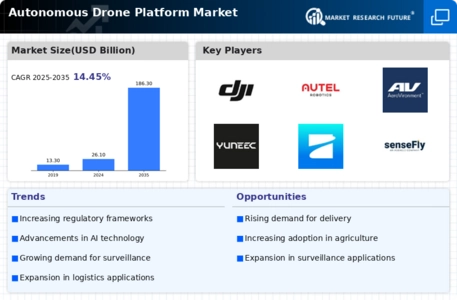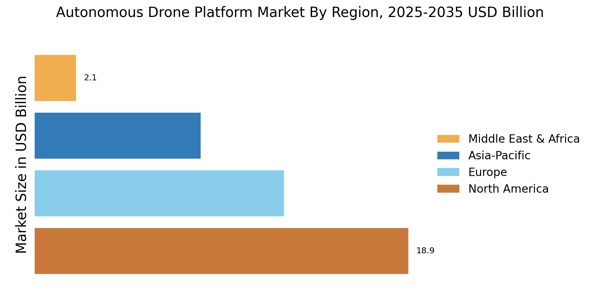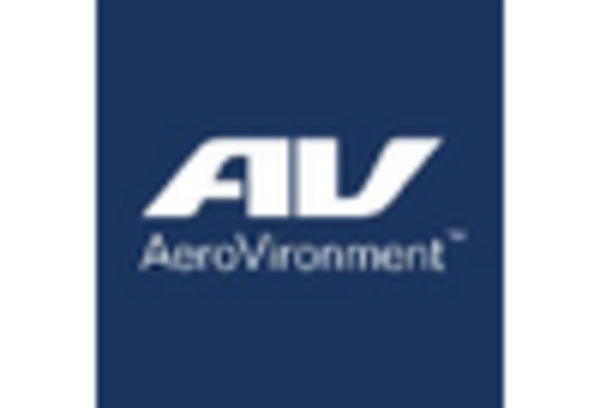Increased Investment and Funding
Investment in the Autonomous Drone Platform Market is on the rise, driven by the growing recognition of drones' potential across various sectors. Venture capitalists and private equity firms are increasingly funding startups and established companies that focus on drone technology. In 2025, it is estimated that investments in drone technology could reach USD 10 billion, reflecting a strong belief in the market's future. This influx of capital is likely to accelerate research and development efforts, leading to the introduction of advanced drone models and services. Additionally, government grants and incentives aimed at promoting drone innovation further bolster the market. As funding continues to grow, the Autonomous Drone Platform Market is poised for substantial expansion.
Diverse Applications Across Industries
The versatility of autonomous drones is a key driver for the Autonomous Drone Platform Market, as they find applications across various sectors. Industries such as agriculture, construction, logistics, and surveillance are increasingly adopting drone technology for tasks like crop monitoring, site inspections, and package delivery. For example, in agriculture, drones are utilized for precision farming, which can enhance crop yields by up to 15%. The logistics sector is also witnessing a surge in drone deliveries, with projections indicating that drone delivery services could account for 10% of the total logistics market by 2030. This diversification of applications not only broadens the market scope but also encourages innovation, thereby fueling growth in the Autonomous Drone Platform Market.
Regulatory Developments and Compliance
The regulatory landscape surrounding the Autonomous Drone Platform Market is evolving, with governments worldwide implementing frameworks to ensure safe and responsible drone operations. These regulations are crucial for addressing safety concerns, privacy issues, and airspace management. For instance, the introduction of remote identification requirements is expected to enhance accountability among drone operators. Compliance with these regulations may initially pose challenges for manufacturers and operators; however, it also creates opportunities for growth. The market is likely to see an increase in demand for drones that meet regulatory standards, which could lead to a projected market growth rate of 20% in the coming years. As regulations become more defined, the Autonomous Drone Platform Market is expected to stabilize and mature.
Growing Demand for Surveillance and Security Solutions
The demand for surveillance and security solutions is a significant driver of the Autonomous Drone Platform Market. With increasing concerns over safety and security, both public and private sectors are turning to drones for monitoring and surveillance purposes. Drones equipped with high-resolution cameras and advanced sensors are being deployed for border security, crowd monitoring, and infrastructure protection. The market for security drones is projected to grow at a compound annual growth rate of 18% over the next five years. This trend is further fueled by the need for cost-effective and efficient surveillance solutions. As the demand for security applications rises, the Autonomous Drone Platform Market is likely to see a corresponding increase in the adoption of drone technology.
Technological Advancements in Autonomous Drone Platforms
The Autonomous Drone Platform Market is experiencing rapid technological advancements that enhance operational efficiency and capabilities. Innovations in artificial intelligence, machine learning, and sensor technology are driving the development of more sophisticated drones. These advancements enable drones to perform complex tasks such as real-time data analysis, obstacle avoidance, and autonomous navigation. According to recent data, the integration of AI in drone technology is projected to increase market growth by approximately 25% over the next five years. Furthermore, advancements in battery technology are extending flight times, making drones more viable for various applications. As these technologies evolve, they are likely to attract investments and foster competition, thereby propelling the Autonomous Drone Platform Market forward.


















Leave a Comment